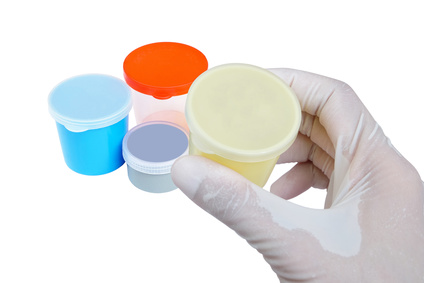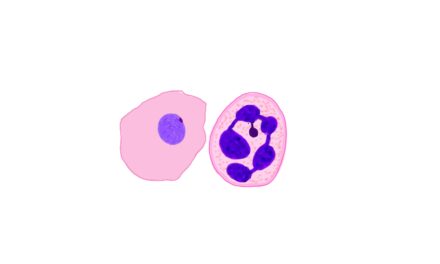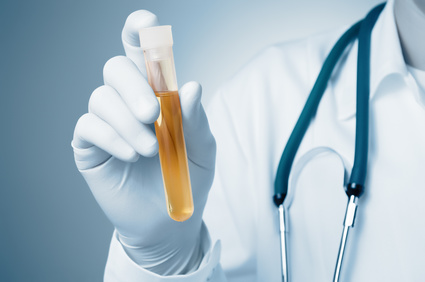Author : Dr Swathi Sahni.
Editor: Dr Vijay Shankar. S.
1. What is sputum and what are its constituents?
Tracheobronchial secretions are often collectively referred to as sputum. Sputum is constituted by plasma, water, electrolytes and mucin.
2. What is the principal source of sputum secretion?
Principal source of sputum/tracheobronchial secretions are the goblet cells and mucus glands. The surface lining of the respiratory tract is by ciliated columnar cells with goblet cells. The goblet cells produce a thick mucin type of sputum which is diluted by a more serous mixture of acid glycoproteins, sialoproteins and sulphoproteins secreted by submucus glands present in between surface epithelial cells and cartilaginous plate.
3. What is the stimulus for sputum production?
The stimulus for sputum production are
a. Vagal nerve stimulation
b. Cholinergic drugs
c. Immununologic and inflammatory stimulus, mast cells , Eosinophils and plasma cells may contribute to the secretions.
a. Vagal nerve stimulation
b. Cholinergic drugs
c. Immununologic and inflammatory stimulus, mast cells , Eosinophils and plasma cells may contribute to the secretions.
4.What are the physical properties of sputum?
The sputum is viscoelastic, that is, some of the properties of a liquid and some that of solid.
5. What is the chemical composition of sputum?
The chemical composition is
a. 98% water
b. 5% solid comprising of carbohydrate, proteins, lipids and deoxyribonucleic acids.
a. 98% water
b. 5% solid comprising of carbohydrate, proteins, lipids and deoxyribonucleic acids.
6. What are the indications of sputum examination?
The indications are
a. Smear and culture: for identification of causative organism in a suspected infection of lower respiratory tract.
b. Cytological examination to look for viral inclusions, asbestosis, fungal infection and malignant cells.
a. Smear and culture: for identification of causative organism in a suspected infection of lower respiratory tract.
b. Cytological examination to look for viral inclusions, asbestosis, fungal infection and malignant cells.
7. How to collect the sputum sample?
a. Before collecting or expectorating sputum, mouth should be pre rinsed to remove contaminants from oral cavity.
b. Early morning sample is preferred before any mouthwash or taking food
c. Patients should take deep breaths 2 -3 times for filling the lungs, coughs deeply and spits into the container.
d. About 2-5 ml of sputum is to be collected.
b. Early morning sample is preferred before any mouthwash or taking food
c. Patients should take deep breaths 2 -3 times for filling the lungs, coughs deeply and spits into the container.
d. About 2-5 ml of sputum is to be collected.
8. Why early morning sample is preferable?
Early morning sample is best as it represents the pulmonary secretions accumulated overnight.
9. How to obtain sputum from children?
a. Nasopharyngeal swab may be taken which is quite representatiove of the bronchial pathogens
b. Cough plate is held before the child’s mouth and the child is urged to cough
c. Cough swab method gives the most representative, non contaminated sputum sample. Child’s mouth is held open by using tongue depressor. Epiglottis is visualized and touched with swab to induce cough. Material expelled from trachea is deposited on the swab, which can then be plated on the appropriate culture media.
b. Cough plate is held before the child’s mouth and the child is urged to cough
c. Cough swab method gives the most representative, non contaminated sputum sample. Child’s mouth is held open by using tongue depressor. Epiglottis is visualized and touched with swab to induce cough. Material expelled from trachea is deposited on the swab, which can then be plated on the appropriate culture media.
10. What kind of container should be used for sputum examination.?
The container should be
a. Clean and dry
b. Wide mouthed with 25 ml capacity
c. Securely fitted with screw cap
d. Leak proof to prevent aerosol formation
a. Clean and dry
b. Wide mouthed with 25 ml capacity
c. Securely fitted with screw cap
d. Leak proof to prevent aerosol formation
11. What kind of sputum sample is unacceptable for examination?
a. Sample consisting only of saliva ( foamy , clear and watery appearance)
b. Sample if only Squamous epithelial cells are present.
b. Sample if only Squamous epithelial cells are present.
12. What are the methods for induction of sputum production.?
If the patient is not cooperative r cannot produce adequate sputum, induction should be tried. The commonly used inductants are
a. 15% NaCl aersol spray and 20% propylene glycol for 20 min.
b. Inhaling nebulized hypertonic saline or distilled water with chest physiotherapy
c. For the patient with history of bronchospasmodic disorders, bronchodilators should be given after inductants. Eg: Acetylcholine in aerosol form with a bronchodilator.
a. 15% NaCl aersol spray and 20% propylene glycol for 20 min.
b. Inhaling nebulized hypertonic saline or distilled water with chest physiotherapy
c. For the patient with history of bronchospasmodic disorders, bronchodilators should be given after inductants. Eg: Acetylcholine in aerosol form with a bronchodilator.
13. How to transport a sputum sample?
Samples should be immediately transported to laboratory if possible. If the sample is to be transported to a distant laboratory, transport in 25 ml of the following solution
N acetypyridinium chloride-5gm
Sodium chloride-10gm
Distilled water 1000ml.
Sputum should not be refrigerated in any case.
N acetypyridinium chloride-5gm
Sodium chloride-10gm
Distilled water 1000ml.
Sputum should not be refrigerated in any case.
14. What will happen if sputum is allowed to stand without medium?
It will lead to
a. Rapid proliferation of contaminating bacterial flora from the oral cavity and throat
b. H Influenzae do not survive for long
a. Rapid proliferation of contaminating bacterial flora from the oral cavity and throat
b. H Influenzae do not survive for long
15. What is Saccomanno technique?
Saccomano technique is the best & most widely used method of fixation & concentration of sputum. This method involves collection & fixation of sputum in a solution of 50% ethyl alcohol & 2% carbowax followed by blending & smearing. It was originally used in 1970’s to screen for lung cancer.
16. What the advantages of Saccomanno method?
The advantages are
a. To preserve the specimen until preparation is possible
b) Transportation of the specimen
c) Higher diagnostic yield as this method enables concentration & use of representative sample of the entire specimen.
a. To preserve the specimen until preparation is possible
b) Transportation of the specimen
c) Higher diagnostic yield as this method enables concentration & use of representative sample of the entire specimen.
17. What does the color of sputum signifies?
The color of the sputum signifies the following conditions.
| Bloody (hemoptysis) | Pulmonary TB, Lung abscess, bronchiectasis, bronchogenic carcinoma, mitral stenosis, pulmonary infarction |
| Rusty | Pneumococcal lobar pneumonia |
| Bloody and gelatinous ( Red currant jelly) | Klebsiella pneumonia |
| Green | Pseudomonas infection |
| Purulent | Bronchiectasis, lung abscess |
| Pink, frothy | Pulmonary edema |
18. What is the normal odour of the sputum and what does different odour signify?
Normal sputum is odourless
a. Putrid odour: seen in suppurative pulmonary disorders such as lung abscess, cavitary TB or gangrene
b. Fecal odour: in ruptures subphrenic or liver abscess.
a. Putrid odour: seen in suppurative pulmonary disorders such as lung abscess, cavitary TB or gangrene
b. Fecal odour: in ruptures subphrenic or liver abscess.
19. What are the prerequisites for gram staining of sputum.?
The prerequisites are
a. There should not be Squamous cells covered with masses of bacteria- indicates sample is mostly from mouth or throat.
b. If Neutrophils are less than 10 per epithelial cells there is no need for culture
c. Knowledge of flora of mouth and pharynx is necessary before analysis
a. There should not be Squamous cells covered with masses of bacteria- indicates sample is mostly from mouth or throat.
b. If Neutrophils are less than 10 per epithelial cells there is no need for culture
c. Knowledge of flora of mouth and pharynx is necessary before analysis
20. What are the normal flora of oral cavity and pharynx.?
The normal flora are as follows
| Gram positive | Gram Negative |
| Staphylococcus aureus and epidermidis | Enterobacteriaciae |
| Streptococcus viridians and pneumonia | Hemophilus influenza |
| Diptheroids | Eikenella corrodens |
| Enterococci | Actinobacillus |
| Micrococci | Actinomycetes |
| Lactobacilli | |
| Yeasts ( candida species) |
21. What are the morphological appearances of different organisms on gram stain?
The morphological appearances are as follows
| a) Streptococcus pneumonia | Gram positive diplococcic with surrounding clear space |
| b) Staphylococcus aureus | Gram positive cocci in grape like clusters |
| c) Candida | Gram positive yeast cells with budding & pseudohyphae |
| d) Moraxella catarrhalis | Gram negative diplococcic both in intra & extracellular |
| e) H. Influenzae | Gram negative coccobacilli |
| f) Actinomyces | Large granules with center gram negative & periphery gram positive |
22. What is the ideal sputum sample for culture.?
Ideal sample should contains:
a. Alveolar macrophages
b. numerous Neutrophils (>5/Hpf)
c. Bronchial epithelial cells (<10/Hpf)
d. Few Squamous cells (<10/Hpf)
a. Alveolar macrophages
b. numerous Neutrophils (>5/Hpf)
c. Bronchial epithelial cells (<10/Hpf)
d. Few Squamous cells (<10/Hpf)
23. What are Dittrich’s plugs.?
These plugs are seen most commonly in chronic bronchitis, bronchiectasis & bronchial asthma
When expectorated, they are usually solitary of a variable size.
When crushed, they are found to be made of cellular debris, fatty acid crystals, fat globules & bacteria
When expectorated, they are usually solitary of a variable size.
When crushed, they are found to be made of cellular debris, fatty acid crystals, fat globules & bacteria
24. Name the various parasites seen in sputum.?
a. AscarisLumbricoides
b. Echinococcusgranulosus
c. Toxocaracaris
d. Paragonimuswestermani
b. Echinococcusgranulosus
c. Toxocaracaris
d. Paragonimuswestermani
25. What is Curschmann’s Spirals ?
Curschmann’s Spirals are characteristic of bronchial asthma sputum but may be seen in other respiratory disorders.
Macroscopically, they can sometimes be recognized by naked eye & appear as yellow, white, mucoid, wavy threads frequently coiled into little balls. Their length may exceed 1-5cm.
Microscopically, they show a central thread around which mucus is wrapped, supported by a fibril network.
Macroscopically, they can sometimes be recognized by naked eye & appear as yellow, white, mucoid, wavy threads frequently coiled into little balls. Their length may exceed 1-5cm.
Microscopically, they show a central thread around which mucus is wrapped, supported by a fibril network.
26. What are Charcot Leyden crystals?
Charcot Leyden crystals are seen in sputum of bronchial asthma cases. The crystals are colorless,
pointed hexagons & variable in size (may look needle shaped). These are derived from
disintegration of eosinophils hence they stain strongly with eosin.
pointed hexagons & variable in size (may look needle shaped). These are derived from
disintegration of eosinophils hence they stain strongly with eosin.
27. What is the significance of sputum in heart disease?
a. In acute Pulmonary oedema:Sputum is a abundant, frothy & pink (upto 1 liter a day) Microscopically, it shows numerous RBC’S & large hyaline masses
b. Mitral heart disease:Sputum is tenacious & blood is present, either in streaks or in dark masses mixed with mucus
c. In chronic congestive heart failure: Sputum is frothy & rust colored .Microscopically, presence of RBC’s & heart failure cells
b. Mitral heart disease:Sputum is tenacious & blood is present, either in streaks or in dark masses mixed with mucus
c. In chronic congestive heart failure: Sputum is frothy & rust colored .Microscopically, presence of RBC’s & heart failure cells
28. What kind of inclusions seen in different viruses of sputum sample ?
| Parainfluenza & amp;measles virus | Eosinophilic intracytoplasmic inclusion |
| Respiratory syncytial cytomegalovirus | Basophilic intracytoplasmic inclusion |
29. Why Auramine Rhodamine staining is superior to Ziehl–Neelsen staining?
a) AFB have more affinity for AR dye
b) The entire smear can be screened as the lower power (x10) objective is used
c) The black background in fluorescent microscopy males the bacilli stained out sharper to allow more rapid & accurate slide screening
b) The entire smear can be screened as the lower power (x10) objective is used
c) The black background in fluorescent microscopy males the bacilli stained out sharper to allow more rapid & accurate slide screening






